Top Rankings
Keene School District ranks among the top 20% of public school district in New Hampshire for:
Category
Attribute
Diversity
Most diverse schools (Top 1%)
Community Size
Largest student body (number of students) (Top 1%)
For the 2025 school year, there is 1 public middle school serving 601 students in Keene School District. This district's average middle testing ranking is 2/10, which is in the bottom 50% of public middle schools in New Hampshire.
ÎÛÎÛÂþ» Middle School in Keene School District have an average math proficiency score of 23% (versus the New Hampshire public middle school average of 37%), and reading proficiency score of 38% (versus the 49% statewide average).
Minority enrollment is 14% of the student body (majority Hispanic), which is less than the New Hampshire public middle school average of 15% (majority Hispanic).
Overview
This School District
This State (NH)
# Schools
7 Schools
156 Schools
# Students
3,018 Students
47,559 Students
# Teachers
266 Teachers
4,474 Teachers
Student : Teacher Ratio
11:1
11:1
District Rank
Keene School District, which is ranked within the bottom 50% of all 189 school districts in New Hampshire (based off of combined math and reading proficiency testing data) for the 2021-2022 school year.
The school district's graduation rate of 90% has decreased from 91% over five school years.
Overall District Rank
#151 out of 189 school districts
(Bottom 50%)
(Bottom 50%)

Math Test Scores (% Proficient)
31%
40%
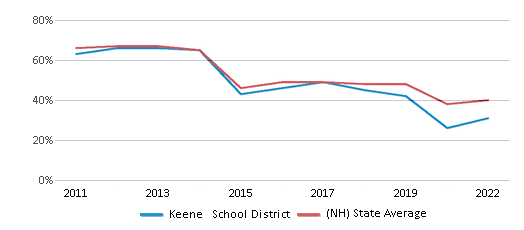
Reading/Language Arts Test Scores (% Proficient)
45%
51%
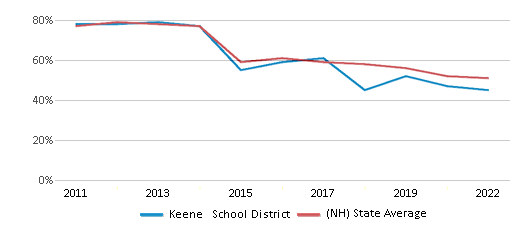
Science Test Scores (% Proficient)
32%
36%

Graduation Rate
90%
88%
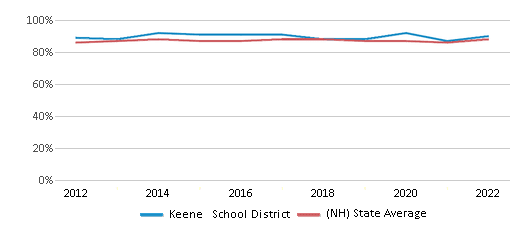
Students by Ethnicity:
Diversity Score
0.26
0.28
# American Indian Students
25 Students
75 Students
% American Indian Students
1%
n/a
# Asian Students
70 Students
1,369 Students
% Asian Students
2%
3%
# Hispanic Students
138 Students
2,819 Students
% Hispanic Students
5%
6%
# Black Students
51 Students
818 Students
% Black Students
2%
2%
# White Students
2,593 Students
40,294 Students
% White Students
86%
85%
# Hawaiian Students
10 Students
34 Students
% Hawaiian Students
n/a
n/a
# Two or more races Students
131 Students
2,151 Students
% of Two or more races Students
4%
4%
Students by Grade:
# Students in PK Grade:
93
456
# Students in K Grade:
163
1,393
# Students in 1st Grade:
160
1,550
# Students in 2nd Grade:
180
1,543
# Students in 3rd Grade:
175
1,589
# Students in 4th Grade:
150
1,979
# Students in 5th Grade:
168
4,447
# Students in 6th Grade:
205
10,050
# Students in 7th Grade:
209
12,326
# Students in 8th Grade:
187
12,086
# Students in 9th Grade:
337
36
# Students in 10th Grade:
344
41
# Students in 11th Grade:
314
28
# Students in 12th Grade:
333
35
# Ungraded Students:
-
-
District Revenue and Spending
The revenue/student of $22,335 is higher than the state median of $22,075. The school district revenue/student has stayed relatively flat over four school years.
The school district's spending/student of $20,796 is less than the state median of $21,293. The school district spending/student has stayed relatively flat over four school years.
Total Revenue
$67 MM
$3,646 MM
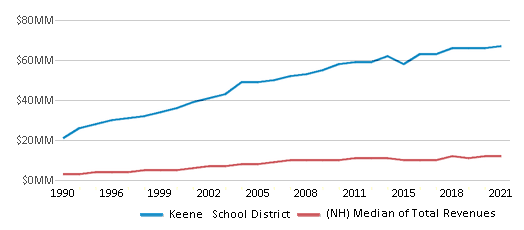
Spending
$63 MM
$3,517 MM
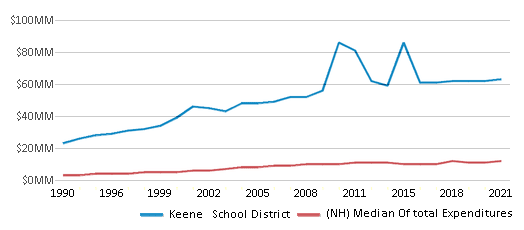
Revenue / Student
$22,335
$22,075
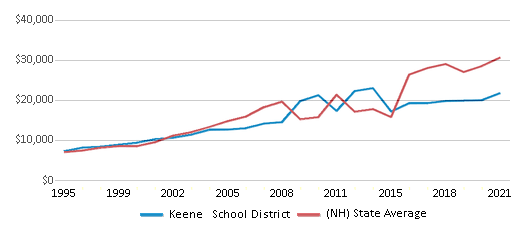
Spending / Student
$20,796
$21,293
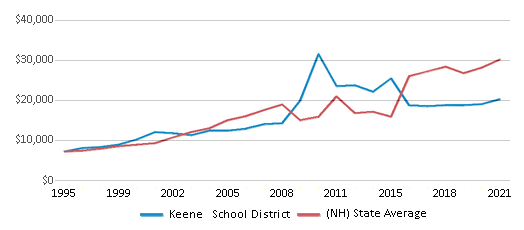
Best Keene School District ÎÛÎÛÂþ» Middle Schools (2025)
School
(Math and Reading Proficiency)
(Math and Reading Proficiency)
Location
Grades
Students
Rank: #11.
Keene Middle School
(Math: 23% | Reading: 38%)
Rank:
Rank:
2/
Bottom 50%10
167 Maple Ave.
Keene, NH 03431
(603) 357-9023
Keene, NH 03431
(603) 357-9023
Grades: 6-8
| 601 students
Recent Articles

Year-Round Or Traditional Schedule?
Which is more appropriate for your child? A year-round attendance schedule or traditional schedule? We look at the pros and cons.

Why You Should Encourage Your Child to Join a Sports Team
Participating in team sports has a great many benefits for children, there is no doubt. In this article you will learn what those benefits are.

White Students are Now the Minority in U.S. ÎÛÎÛÂþ» Schools
Increasing birth rates among immigrant families from Asia and Central and South America, combined with lower birth rates among white families, means that for the first time in history, public school students in the United States are majority-minority. This shift in demographics poses difficulties for schools as they work to accommodate children of varying language abilities and socio-economic backgrounds.





